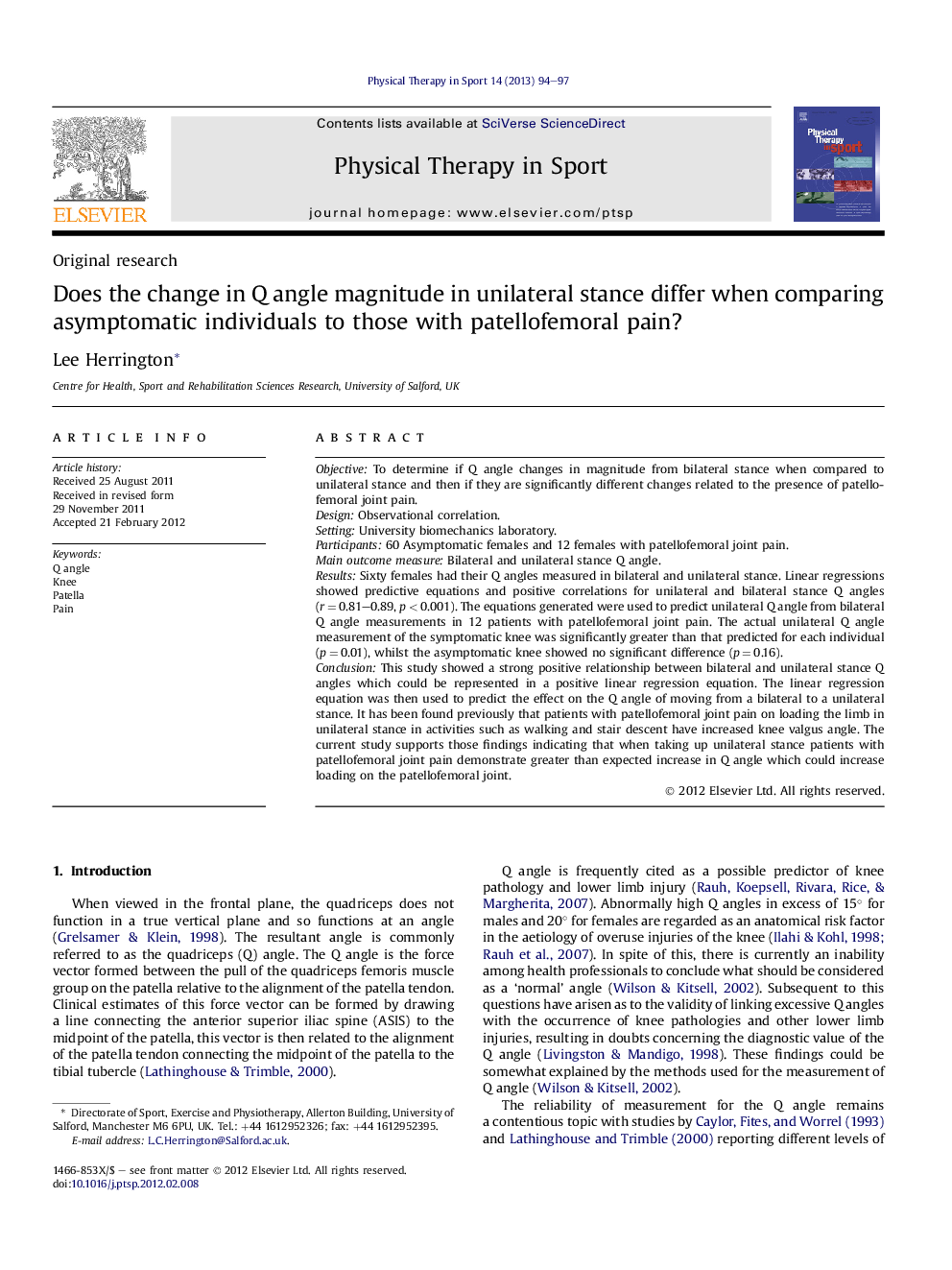| Article ID | Journal | Published Year | Pages | File Type |
|---|---|---|---|---|
| 2705857 | Physical Therapy in Sport | 2013 | 4 Pages |
ObjectiveTo determine if Q angle changes in magnitude from bilateral stance when compared to unilateral stance and then if they are significantly different changes related to the presence of patellofemoral joint pain.DesignObservational correlation.SettingUniversity biomechanics laboratory.Participants60 Asymptomatic females and 12 females with patellofemoral joint pain.Main outcome measureBilateral and unilateral stance Q angle.ResultsSixty females had their Q angles measured in bilateral and unilateral stance. Linear regressions showed predictive equations and positive correlations for unilateral and bilateral stance Q angles (r = 0.81–0.89, p < 0.001). The equations generated were used to predict unilateral Q angle from bilateral Q angle measurements in 12 patients with patellofemoral joint pain. The actual unilateral Q angle measurement of the symptomatic knee was significantly greater than that predicted for each individual (p = 0.01), whilst the asymptomatic knee showed no significant difference (p = 0.16).ConclusionThis study showed a strong positive relationship between bilateral and unilateral stance Q angles which could be represented in a positive linear regression equation. The linear regression equation was then used to predict the effect on the Q angle of moving from a bilateral to a unilateral stance. It has been found previously that patients with patellofemoral joint pain on loading the limb in unilateral stance in activities such as walking and stair descent have increased knee valgus angle. The current study supports those findings indicating that when taking up unilateral stance patients with patellofemoral joint pain demonstrate greater than expected increase in Q angle which could increase loading on the patellofemoral joint.
